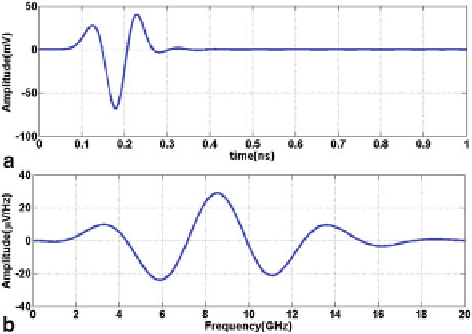Biomedical Engineering Reference
In-Depth Information
Fig. 3
A sample of the
transmitted pulse.
a
Time
domain.
b
Frequency domain
Two main architectures of networks with this characteristic are explored. As there
are only two classes of output, the network should perform as a binary classifier.
Consequentially, either architectures will require that the output layer of the network
has two neurons regardless of the number of hidden layers and neuron types, as the
networks will be required to classify between the two groups—benign and malignant.
The number of hidden neurons used in this study is based on extensive simulations
and emulation of other related clinical studies.
Kolmogorov Architecture
Kolmogorov argued that the correct and efficient number of hidden layers required
to solve a classification problem is either one or two [
30
]. In addition, it is shown
that additional hidden layers beyond the second one are superfluous and only serve
to slow down the network.
In light of this hypothesis, Kolmogorov network 1 (K1) has been constructed. It
has 50 tangent-sigmoid neurons in the hidden layer and 2 tangent-sigmoid neurons in
the output layer. The network is illustrated in Fig.
4
. In the figure, 'W' represents the
weights matrix by which the input vector is multiplied and 'b' is the bias vector. An
extension of K1 is also constructed with an additional hidden layer also constituting
of 50 tangent-sigmoid neurons (Fig.
5
).
9-5-5-2 Architecture
This architecture is made up of four hidden layers containing 9, 5, 5 and 2 tangent-
sigmoid neurons, respectively in the order of distance from the input. The network

Search WWH ::

Custom Search